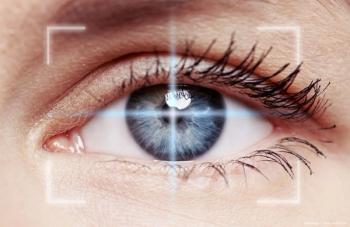
Remote imaging system increases doctor's reach to premature infants
Palo Alto, CA-Darius Moshfeghi, MD, pediatric retina specialist at Lucile Packard Children's Hospital, Palo Alto, CA, and one of just a few physicians in California's Bay Area trained to diagnose retinopathy of prematurity (ROP), is using technology to bring his expertise to premature babies without having to travel to see them.
Dr. Moshfeghi, who is also an assistant professor of ophthalmology at the Stanford University School of Medicine, Stanford, CA, had been spending valuable time driving hundreds of miles around the Bay Area each week to examine at-risk premature infants.
New guidelines implemented in February 2006 recommended ROP screening for any child born at 32 weeks of gestation or less, or weighing less than 1,500 g.
"Children with borderline results need to be re-screened repeatedly until they meet criteria for either treatment or termination of acute phase screening," he said.
Dr. Moshfeghi traveled to outlying hospitals to look in infants' eyes with an indirect ophthalmoscope. He would make notes and draw pictures to use as a benchmark for future examinations.
But a developing telemedicine network, the first of its kind at a U.S. academic center, enables Dr. Moshfeghi to complete an examination remotely, without wasting time in the car.
"Now, I can devote myself exclusively to diagnosis. I can leverage my time and evaluate even more babies," he said.
The new technology is the Stanford University Network for Diagnosis of Retinopathy of Prematurity (SUNDROP). Physicians, like Dr. Moshfeghi, view computerized images of the retina of a child using an imaging system called the RetCam II (Clarity Medical Systems Inc.). A hand-held fiber optic camera is connected to a wheeled console with a control panel and color video monitor. Trained staff scans an infant's eye in about 5 minutes. The procedure is safe and quick.
Real-time imaging may be available in the near future, allowing a remote doctor to observe the scan as it happens, and ask for adjustments in focusing, angle, or lighting during the imaging.
Transferring images
The digital image files are electronically transferred (using File Transfer Protocol to be HIPAA-compliant) to Dr. Moshfeghi for analysis. Images also can be printed, shared, or saved for future reference.
"A pictorial history increases the chance of a timely and accurate diagnosis," said Dr. Moshfeghi. "It's now possible to save a longitudinal history of the baby and more accurately track the progression of the disease."
Newsletter
Don’t miss out—get Ophthalmology Times updates on the latest clinical advancements and expert interviews, straight to your inbox.
















































.png)


